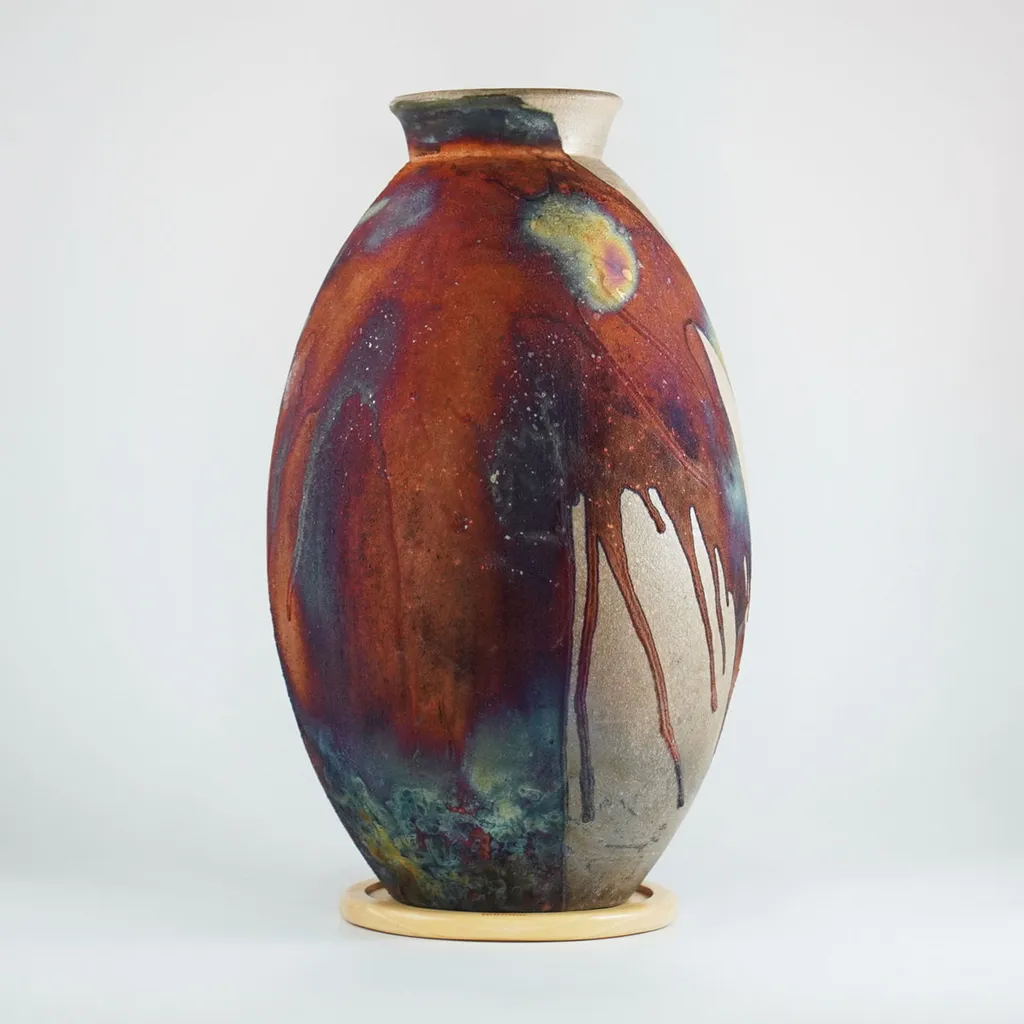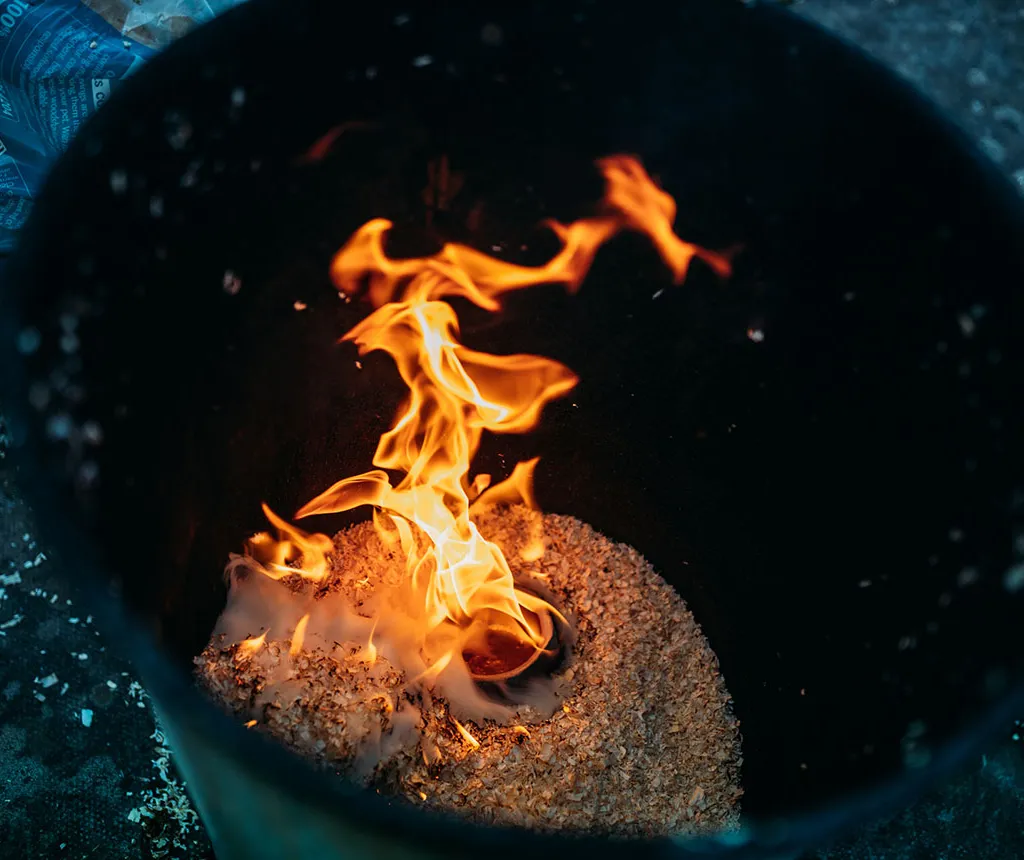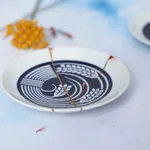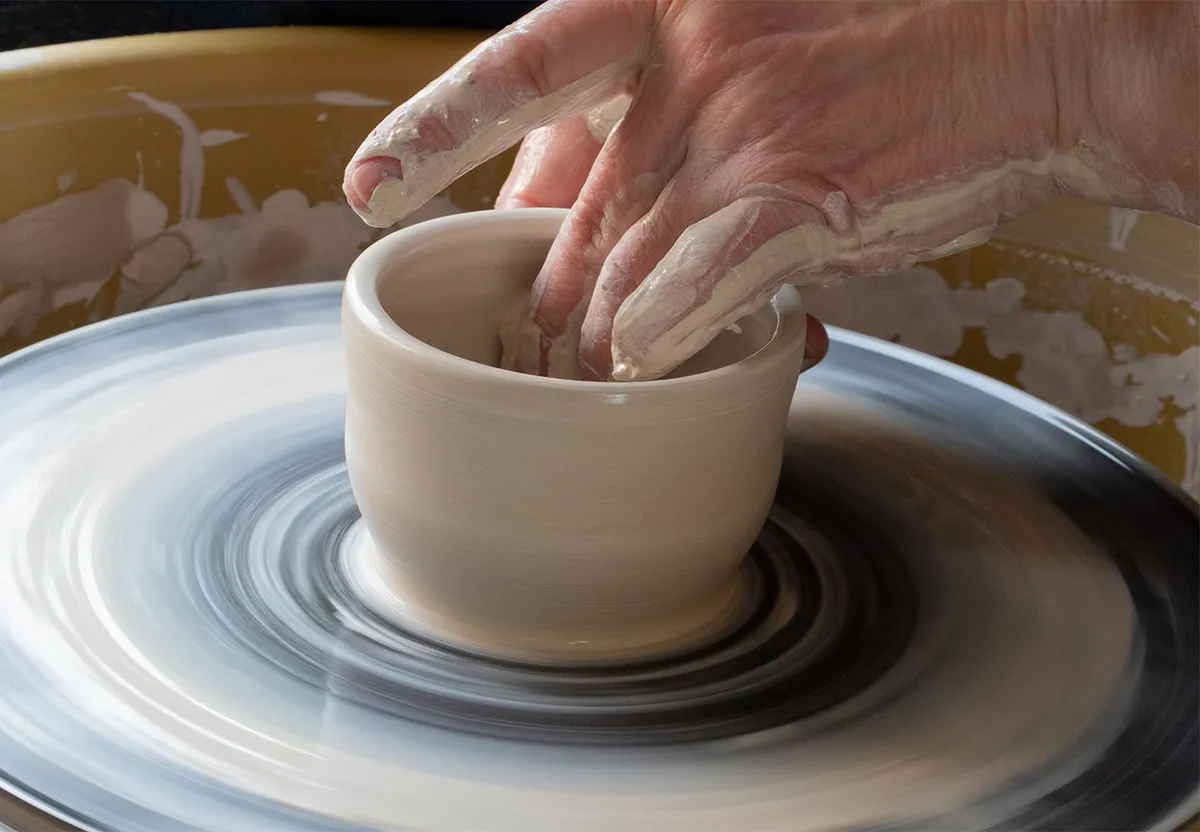If you’re a regular viewer of The Great Pottery Throw Down, you’ll definitely be familiar with the raku pottery technique. Raku week has been one of the show’s staples since it began.
This beautiful pottery firing technique originated in Japan and can be used to create truly unique ceramics.
The raku firing technique produces distinctive markings on the surface of the pots as they’re fired, with different results every time. Its unpredictability is all part of the charm!
What is raku pottery?
Raku pottery is a method of firing pottery which was invented in Japan. Unlike other traditional firing techniques, the raku firing process doesn’t take place entirely within the kiln.
It’s worth noting that Western raku firing techniques differ from the traditional practice of raku pottery making in Japan. Authentic Japanese raku pots are shaped by hand, not thrown on a wheel. They are also removed from the kiln while hot and allowed to cool in the air.
The modern raku technique produces vivid colours and dark stains where the pottery comes into contact with the combustible materials.
First, the pots are heated to a high temperature within a kiln. Once the pots are red hot, they’re removed from the kiln to cool. Raku pots can be cooled in the air or plunged into water or combustible materials.
The process creates unusual markings on the surface of the pots, which will be different every time. This rapid cooling technique can often lead to thermal shock, meaning that the pots crack and are ruined. Raku pottery can be expensive due to the high level of breakage.

The history of raku pottery
The ancient art of raku pottery has its roots in 16th century Japan and raku ware has traditionally been used for tea ceremonies.
The raku technique was invented by the tea master Sen no Rikyū, who commissioned a tile-maker called Chōjirō to make bowls for tea ceremonies. Sen no Rikyū was hugely influential in developing the Japanese Way of the Tea and tea ceremonies today are still based on his ideals. His descendants teach his traditional methods to this day.
Rikyū’s son, Jokei, was presented with a seal by the emperor, which bore the Chinese character raku, which means enjoyment.
The first raku bowls were intended to look and feel very rustic and were part of wabi-sabi tea ceremonies. The earliest raku pots were referred to as redware or blackware. Redware was made using red clay, which was then glazed, while blackware was made using stoneware clay and coloured with a black glaze.
The way that raku pots were rapidly cooled after firing resulted in a distinctive cracked glaze. According to the experts at oxfordclay.co.uk, bowls with cracked glazes were preferred for tea ceremonies: “Tea bowls made with un-crazed glazes were said in Japanese culture to disturb the calm atmosphere of the tea room through the harsh loud sound of the tea being whisked in the bowl. Whereas raku ware tea bowls made with crazed glazes made a quieter, duller sound.”
The Western raku pottery technique developed much later. Bernard Leach is widely credited with introducing raku methods in the western hemisphere. He attended a raku pottery party when he was living in Japan in 1911 and was fascinated by it. Bernard later wrote about raku in A Potter’s Book, which was published in 1940.
Potters based in the US, such as Hal Riegger and Warren Gilbertson, then developed their own raku firing methods in the 1940s. By the 1970s, raku firing had become a popular pottery technique.
How to make raku pottery

Raku pots are given an initial bisque firing in a kiln. This strengthens the pots and makes it easier to apply glazes.
Once fired and glazed, the pots are ready for a second firing. The pots are fired until the glaze has melted and they are ready to be removed from the kiln.
Next, the pots are taken out of the kiln and usually placed into a metal container with combustible materials such as leaves or straw. Due to the high temperature of the pots, the materials burn away leaving markings on the surface of the pots.
The lid of the metal container is closed to reduce the flow of air. Starving the piece of oxygen can create a range of colours within the glaze.
Potters often like to experiment with different materials to achieve different effects. Horse hair is sometimes used by Western raku potters to give their pots a beautiful smoky finish.
Raku is a fascinating technique with lots of variations, which is all part of its appeal. For example, you can use wax resist techniques to leave parts of your pot unglazed. These areas will then darken in the kiln as the wax melts away. Copper glazes can also be used, which produce stunning metallic patterns. Find out more about the raku firing process with Soul Ceramics.
Frequently asked questions about raku pottery
How to identify raku pottery

There are a few different characteristics which can help you to identify raku pottery. The first thing to look out for is a crazed (cracked) glaze, which is a result of the firing process.
Western-style raku often uses glazes in bright colours, such as turquoise and green. Metallic glazes are also very popular.
Raku can also be identified by the patterns and marks created when the hot pottery comes into contact with combustible materials. Horse hair, for example, leaves unique shapes on the surface of the pot. Unglazed areas of raku pottery will often appear black due to the firing process.
Can you use a regular kiln for raku?
You can use a regular kiln for the initial bisque firing of your raku pottery, but you’ll need a raku kiln to complete the process.
You can buy specialist raku kilns, but it is possible to make your own DIY raku kiln using a metal bin and some ceramic fibre.
Can you drink out of raku?
Drinking from raku pots is not recommended due to the nature of the glazes and porous nature of the ceramic, although they are still used in traditional tea ceremonies.
The crazed glazes can flake away and be swallowed, which is not healthy, and the cracks in the surface can harbour bacteria.
Raku glazes also contain metal oxides such as chromium oxide, which make the finished ceramics unsafe to use for food.
It is possible to seal raku pottery to make it waterproof, but it still shouldn’t be used as tableware. Raku pots should be ornamental and not used for food or drink.
Can you make raku in a microwave?
Yes, you can! It’s possible to achieve raku effects using a microwave kiln using this video tutorial from Breva Creative. Microwave kilns can only be used for very small pieces, so you’ll only be able to make mini raku pots using this method.
What are some of the risks of raku?
Raku firing can be very dangerous, so it’s important to be aware of the risks before you start making raku pots.
Removing the hot pottery from the kiln is hazardous, so you need to think about how you’ll protect yourself and others during the firing process.
Other risks to consider when you’re using the raku firing technique include:
- The smoke can be very dangerous, so raku firing should only be done outdoors and away from open windows.
- Combustible materials such as straw should not have been treated with chemicals or pesticides.
- You should wear protective clothing to prevent burns.
This health and safety guide from the Scottish Potters Association contains lots of tips to help you stay safe when you’re making raku pots.

Repair broken pottery using the kintsugi technique
Don’t throw away broken pots or tableware! You can transform them into something beautiful using the kintsugi technique, which originated in Japan. Learn how to master kintsugi with Gathered.
Use the raku pottery technique for unique effects
The raku firing technique has its roots in Japan and has become a popular way to create one-of-a-kind effects on the surface of pottery. If you’ve never tried raku before, it’s a great technique to explore if you want to develop your own style as a potter and expand your repertoire.
Be a better potter with our pottery techniques guide
If you’re new to pottery and want to develop your skills, it can be difficult to know where to begin. Take your first steps into ceramics with Gathered’s pottery techniques guide.


